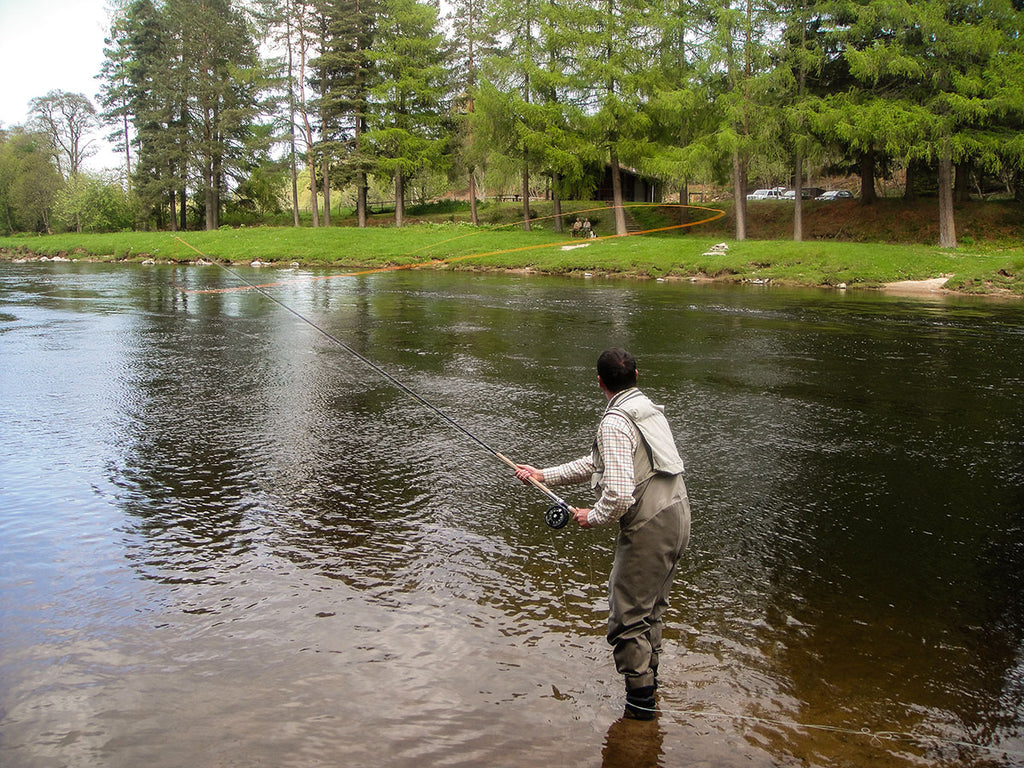Snap T Snap C casts
The Snap T Snap C & V cast
Learning the Snap C or T Spey Casts can be a very effective addition to your casting skills and relatively easy to learn.
The snap casts were favoured by the sunken line steel headers of the West coast. Although they are not classic Spey casts, they are highly effective for practically any form of outfit or equipment including Spey lines, shooting heads and Sgagit techniques. The snap casts can also be learned very quickly and it is a method I will often adopt when I have to teach a client a cast in a short time period.
These casts can be categorised in various forms, the Snap T, Snap C and also the Snap V. It is the path, speed and trajectory of the rod tip that influences the shape of the line as we transfer it upstream. During the initial movements, the rod is steadily raised upstream at around 45 degrees to the water’s surface. It is then accelerated round and back under the tensioned line to point back downstream with the rod tip finishing in position no higher than head height. The variation in angle and trajectory of the rod tip during these initial movements are key in performing the various casts and desired line form and shape. When making a Snap C cast using heavy lines or flies the initial upstream movement and rod tip path can start on a much more convex path as it is brought upstream. It will also be much more rounded as the rod is tacked and accelerated under and back down stream. This helps to eliminate any excessive speed or energy it the line which is more desirable when lifting heavy lines of flies.
Learning the Snap T Cast
The rod is raised and smoothly accelerated upstream on an incline until it reaches the angler’s position, or there abouts (dependant on line length) it is then sliced downward just under the tensioned line and into the angler’s own bank. If done correctly the end of the line will be cleverly flipped upstream to produce a slight curve of line in front of the angler as it lands on the water’s surface. The anchor will now have been positioned upstream and the rod tip will be facing downstream. When using longer Spey lines, it is important to point the rod fully downstream at this point to prevent the anchor travelling onward and too far upstream in relation to the intended target. We can now sweep the rod tip round tracing just inside or above the line on the water’s surface. As the rod tip passes the intended target, it has to take an acute turn in order to form the D loop in correct alignment. This is mainly the result of effective use of the bottom hand as it steers the butt of the rod into position before continuing on an incline up into the key position. As mentioned, in many of the other Spey casts the curvature of the line on the water’s surface helps to optimise the change of direction and rearward energy, as we can tease the line more outwards before pivoting and turning back and up to form the D loop. This can be a great advantage in terms of efficiency, particularly during 90-degree changes of direction casts. There is a slight hesitation to allow the D or V loop to fully form before starting the acceleration and final forward delivery.
Learning the Snap C Cast
The Snap C has many similarities to that of the Snap T, but the tuck under movement of the rod tip as mentioned above will be more rounded or oval rather than quick acute slice. This makes the Snap C more suitable for heavier sunken lines and sink tip as the movements are much more progressive. The movements during the formation of the D loop however will be similar.

